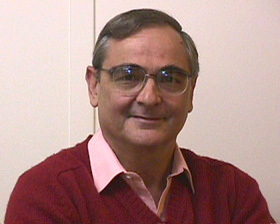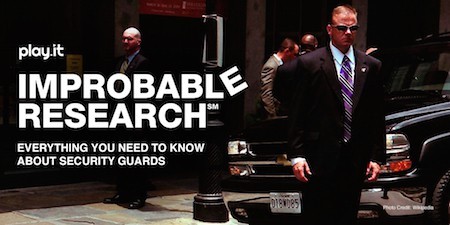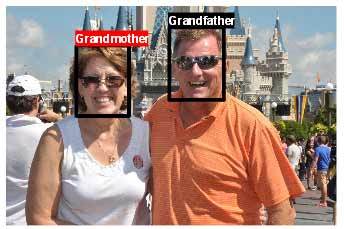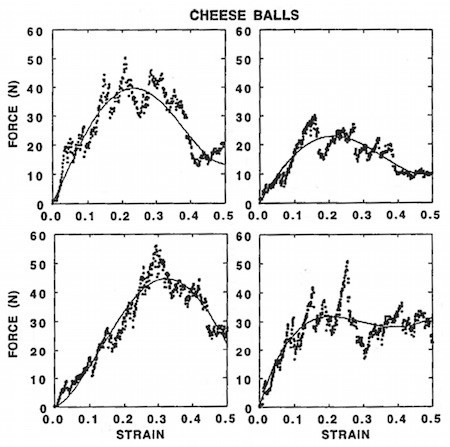Marc Abrahams's Blog, page 315
August 2, 2015
The social events objectives of The Worshipful Company of Actuaries
Question: What are the social events objectives of The Worshipful Company of Actuaries?
Answer: The answer appears on the web site of The Worshipful Company of Actuaries, on the page devoted to “Social Events Objectives”, in a downloadable PDF document named “Social Events Objectives”. Here is that document, reproduced in its entirety (and shrunken a bit, so it fits on this screen):

August 1, 2015
Neuromarketing challenge: dinosaur automobiles
We pose this challenge about dinosaurs and automobiles and marketing.
[BACKGROUND: Because the word “marketing” is no longer as futuristic as it was in the past, the still-kinda-new field of neuromarketing (read about it here, here, and here, or use your own cogno-intellectual powers to come up with your own definition) is the place to go for innovative confabulations.]
Here is our Challenge to Marketers and Car Manufacturers— Do an experiment to answer the question: Would automobiles sell much better if more models were named after dinosaurs?

July 31, 2015
(Self-tested!) Intravenous garlic juice herpes treatment (new patent)
Inventor Behnam Azizkhani describes a newly patented (US 9,089,597) medical treatment (for herpes and other conditions) involving intravenous diluted garlic juice injections – which were self-tested. The patent includes this compelling technical drawing; the inventor is represented, graphically, as the bottommost element of the drawing:
Please note: Improbable strongly recommends that interested parties should consult qualified medical professionals before undertaking any treatments, garlic-juice based or otherwise, for herpes, antibiotic resistant bacterial infections, cutaneous Leishmaniasis, malaria, multiple sclerosis or any other diseases or medical conditions mentioned in the patent.
Here’s further detail from the patent:
Injection Results, First Human Trials on the Inventor
After reviewing the results from the tests on the animals, the inventor decided to try an IV injection of garlic solution on himself as an initial human trial. The first trial was performed on Mar. 29, 1996, and a syringe was filled with 25 cc of garlic solution, where the garlic solution was made from 5 cc of pure garlic juice and 20 cc of normal saline. The inventor injected 0.5 cc of the garlic solution directly into his vein and noticed a very biting and sharp pain that started at the injection point and followed the path of the vein to the inventor’s heart. The inventor waited several minutes, and then mixed the remaining 24.5 cc of garlic solution into 500 cc of normal saline, and then continued injecting the diluted garlic solution over the course of 2 hours.
The inventor monitored his vital signs during the injection of garlic solution, including his blood pressure, breathing, heart rate, and temperature. The inventor also tested his complete blood count (CBC), serum glutamic oxaloacetic transaminase (SGOT), and serum glutamic pyruvate transaminase (SGPT) tests both before the injection, and 16 hours after the injection. The inventor noted his heart beat increased to 110 to 115 beats per minute after the initial (high concentration) injection, and this condition continued for approximately 4 hours after finishing all the injections. The inventor’s SGOT test before the injection was within the normal range of 0-37, and 16 hours after the injection the SGOT test increased to 43. The inventor’s SGPT test before the injection was within the normal range of 0-41, and 16 hours after the test the SGPT was 57. The inventor repeated these tests 3 days after the injection, and all the results were within the normal ranges and were almost the same as before the injection. The inventor’s weight was approximately 70 kilograms (kg) for the entire test period described herein.
Nine hours after the injection, the inventor felt pain beginning at the point where the injection was made along the vein in the inventor’s forearm, and the skin was red and inflamed for about 25 centimeters (cm) on this route. Four days after the injection, the inventor’s arm was no longer sore, red, or inflamed, and these conditions did not re-appear. The inventor also had a mild headache and mild nausea after the injection, but the headache stopped 2 days after the injection and the nausea stopped about 6 hours after the injection. For 4 days after the injection, the inventor noticed reduced pains along the route of the injection vein when waking in the morning as compared to when he went to bed the previous night.
Before the injection, the inventor had acute herpetic gingivostomatitis on the left side of his hard palate, with soreness. The inventor noticed the associated burning and pain were gone within 6 hours of the injection, and 2 days after the injection the inventor was asymptomatic. The inventor experienced vertigo, with unknown etiology, for several years before the injection. The inventor had noticed his vertigo was present in both the standing and laying positions and the vertigo became worse when he caught a cold. When the inventor shook his head the vertigo became worse and he became nauseated. The inventor noticed a gradual decline in his vertigo over the 3 months after the injection, and the vertigo was completely absent 3 months after the injection. The inventor did a second injection 2 months after the first, as summarized below.
The inventor completed several IV injections into himself after the first one, as summarized below. In these tests, the garlic solution was injected over a 5 hour period, the garlic was more dilute than the initial 0.5 cc injection, and there was no phlebitis (redness or soreness of the injection vein), and no sign of any allergic reaction or shock.
TABLE-US-00003 Inventor Self-Injection Schedule. cc garlic juice/ Date cc normal saline Comments 29 Mar. 1996 5/520 Started at 5/20 garlic to normal saline 29 May 1996 4/500 25 Mar. 1997 5/500 26 Mar. 1997 4.5/500 27 Mar. 1997 4.5/500 28 Mar. 1997 4.5/500 7 Sep. 1997 4/500 11 Sep. 1997 5/500 26 Dec. 1997 4/500 15 Jun. 1998 5/500
After the 10 self-injections, the inventor determined there were no notable or irreversible side effects when injection 5 cc of pure garlic juice diluted in 500 cc of normal saline into a 70 kg person. At this point, the inventor decided to extend the research to willing and properly informed volunteers. The inventor initiated human trials of IV injection of garlic solution with willing volunteers (who reviewed and signed approvals to participate) on the 24.sup.th of March, 1999, and tests continued for approximately 2 years.“

July 30, 2015
Building on Ig Nobel-winning cereal soggification research
There’s news about soggy-cereal research — a study called “Crunchiness Loss and Moisture Toughening in Puffed Cereals and Snacks,” by Micha Peleg, published in the Journal of Food Science, epub July 29, 2015.
Peleg, at the University of Massachusetts, builds on the research of — among others — 1995 Ig Nobel Nutrition Prize winners D.M.R. Georget, R. Parker, and A.C. Smith of the Institute of Food Research, Norwich, UK. Georget, Parker, and Smith were awarded that prize for their rigorous analysis of soggy breakfast cereal, called “A Study of the Effects of Water Content on the Compaction Behaviour of Breakfast Cereal Flakes“. The Georget/Parker/Smith paper was published in the journal Powder Technology in 1994. (That particular Ig Nobel Prize drew an unexpected reaction from the then-chief scientific advisor to the British government.)
Peleg reports, in his new study:
 “Upon moisture uptake, dry cellular cereals and snacks loose their brittleness and become soggy. This familiar phenomenon is manifested in smoothing their compressive force–displacement curves. These curves’ degree of jaggedness, expressed by their apparent fractal dimension, can serve as an instrumental measure of the particles’ crunchiness. The relationship between the apparent fractal dimension and moisture content or water activity has a characteristic sigmoid shape. The relationship between the sensorily perceived crunchiness and moisture also has a sigmoid shape whose inflection point lies at about the same location. The transition between the brittle and soggy states, however, appears sharper in the apparent fractal dimension compared with moisture plot. Less familiar is the observation that at moderate levels of moisture content, while the particles’ crunchiness is being lost, their stiffness actually rises, a phenomenon that can be dubbed “moisture toughening.” We show this phenomenon in commercial Peanut Butter CrunchR (sweet starch-based cereal), Cheese Balls (salty starch-based snack), and Pork Rind also known as “Chicharon” (salty deep-fried pork skin), 3 crunchy foods that have very different chemical composition.”
“Upon moisture uptake, dry cellular cereals and snacks loose their brittleness and become soggy. This familiar phenomenon is manifested in smoothing their compressive force–displacement curves. These curves’ degree of jaggedness, expressed by their apparent fractal dimension, can serve as an instrumental measure of the particles’ crunchiness. The relationship between the apparent fractal dimension and moisture content or water activity has a characteristic sigmoid shape. The relationship between the sensorily perceived crunchiness and moisture also has a sigmoid shape whose inflection point lies at about the same location. The transition between the brittle and soggy states, however, appears sharper in the apparent fractal dimension compared with moisture plot. Less familiar is the observation that at moderate levels of moisture content, while the particles’ crunchiness is being lost, their stiffness actually rises, a phenomenon that can be dubbed “moisture toughening.” We show this phenomenon in commercial Peanut Butter CrunchR (sweet starch-based cereal), Cheese Balls (salty starch-based snack), and Pork Rind also known as “Chicharon” (salty deep-fried pork skin), 3 crunchy foods that have very different chemical composition.”
Here’s video of other, unrelated investigators investigating soggy chicharon:
Here’s further detail, about force and strain in cheese balls, from Peleg’s study:
Alexandra Ossola reports on the report, in Popular Science, under the slightly exaggerated headline “SCIENCE FINALLY UNDERSTANDS HOW CEREAL GETS SOGGY“.
(Thanks to Jennifer Ouellette for bringing this to our attention.)
Independently, an inventor named Michael Roberts developed a cereal bowl that is said, commercially, to prevent cereal from becoming soggy. Inventor Roberts and his colleagues advertise this bowl under the brand name Obol. Here is their story, as told by them or persons acting at their behest, in the form of a commercial that does not explore so very much the time element that inevitably figures into the story of soggification:

Evaluation of environmental impacts: The case of pasta
Think, if you will, of the pasta. This study demonstrates one way to begin doing that:
“Evaluation of environmental impacts in the catering sector: The case of pasta,” Alessandra Fusi, Riccardo Guidetti, Adisa Azapagic, Journal of Cleaner Production, epub 2015. (Thanks to Tom Gill for bringing this to our attention.) The authors, at Università degli Studi di Milano, Italy and at the University of Manchester, UK, report:
“This study, based in Italy, focuses on environmental impacts of deferred catering with the aim of evaluating different options for food preparation and distribution, to help identify environmentally sustainable solutions. For these purposes, the case of pasta, one of the most popular foods worldwide, is considered. Two main types of deferred system (cook-warm and cook-chill) and cooking technologies (pasta cookers and range tops) used in the catering sector are evaluated. The results suggest that cooking in pasta cookers saves up to 60% of energy and 38% of water compared to range tops and therefore reduces by 34-66% the impacts associated with pasta preparation. The environmental impacts of pasta cooking could also be reduced by using gas rather than electric appliances as the impacts of the latter are higher by 13-98%.”
This video conveys some of the excitement of commercial pasta cooking using a commercial pasta cooker. Watching it, you can almost hear music playing in your head:

July 29, 2015
Podcast #22: The gluteal hardness of security Guards
 “Gluteal Hardness is simple to gauge, at least in security guards. The parameters of interest are: gender; age; fullness of uniform; visibility of scalp; and belt-width and -trappings. The values of these parameters reliably distinguish a guard who is basically strolling over to say hello in case his supervisor is watching, from a guard who’d shoot you if he could.” Private security guards — of many kinds — turn up in this week’s Improbable Research podcast.
“Gluteal Hardness is simple to gauge, at least in security guards. The parameters of interest are: gender; age; fullness of uniform; visibility of scalp; and belt-width and -trappings. The values of these parameters reliably distinguish a guard who is basically strolling over to say hello in case his supervisor is watching, from a guard who’d shoot you if he could.” Private security guards — of many kinds — turn up in this week’s Improbable Research podcast.
Click on the “Venetian blinds” icon — at the lower right corner here — to select whichever week’s episode you want to hear:
SUBSCRIBE on Play.it, iTunes, or Spotify to get a new episode every week, free.
This week, Marc Abrahams tells about:
The hardness of security guards. (“Assessing Gluteal Hardness in Uniformed Security Guards,” an essay by Peter Freundlich, Annals of Improbable Research, vol. 11, no. 3, May-June 2005. Featuring a dramatic reading by Sue Wellington.) Here’s a photo of a dramatic depiction of a private security guard:

Clever contraptions to capture crook (part 1). (Gustano Pizzo’s U.S. Patent #3811643, “Anti Hijacking System for Aircraft,” granted 1972 / Kuo Cheng Hsieh’s U.S. patent #6219959, “Net Trapping System for Capturing a Robber Immediately,” granted 2001 / Charl Fourie and Michelle Wong’s “A Security System for a Vehicle” — International Patent WO/1999/032331, granted 1999 / J.F. Hurd’s “Pickpocket and Coat-thief Detector” — U.S. patent 477940, granted 1892 / Thomas Walsh’s “Fire Alarm Box” — U.S. patent 545141, granted 1895 / Martin Plesac’s “Burglar Apparatus” — U.S. patent 978396, granted 1910. Featuring dramatic readings by Andrew Berry.) Pizzo, Hsieh, and Fourie were all awarded Ig Nobel Prizes for their inventions. Here’s a technical drawing from the Pizzo anti-hijacker patent:

Boys will be boys (research by and for adolescent boys of all ages and sexes). (“Germination Success of Temperate Grassland Species After Passage Through Ungulate and Rabbit Guts,” E. Cosyns, A. Delporte, L. Lens and M. Hoffmann, Journal of Ecology, vol. 93, no. 2, April 2005, pp. 353-61. / “Chewing Behaviour in the Domestic Donkey (Equus asinus) Fed Fibrous Forage,” P.J. Mueller, P. Protos, K.A. Houpt and P.J. Van Soest, Applied Animal Behaviour Science, vol. 60, 1998, pp. 241–51. / “The Fate of Legume Seeds Eaten by Sheep from a Mediterranean Grassland,” L. Russi, P.S. Cocks and E.H. Roberts, Journal of Applied Ecology, vol. 29, 1992, pp. 772–8. / “A Micro Creeping Robot for Colonoscopy Based on the Earthworm,” J. Zuo, et al., Journal of Medical Engineering and Technology, vol. 29, no. 1, January-February 2005, pp. 1-7. / “Improvement of Semen Quality by Nocturnal Scrotal Cooling in Oligozoospermic Men with a History of Testicular Maldescent,” A. Jung, W.-B. Schill and H.-C. Schuppe, International Journal of Andrology, vol. 28, no. 2, April 2005, p. 93. / “The Mother-in-Law Effect,” John Hunt, and Robert Brooks, Proceedings of the Royal Society B, Supplement, vol. 271, 2004, pp. S61–S63.. Featuring dramatic readings by Daniel Rosenberg .)
The mysterious John Schedler perhaps did the sound engineering this week.
The Improbable Research podcast is all about research that makes people LAUGH, then THINK — real research, about anything and everything, from everywhere —research that may be good or bad, important or trivial, valuable or worthless. CBS distributes it, both on the new CBS Play.it web site, and on iTunes and Spotify).
BONUS: Here’s an earlier, fictional depiction of a private security guard: W.C. Fields in the movie The Bank Dick:

Podcast #22: The hardness of security Guards
“Gluteal Hardness is simple to gauge, at least in security guards. The parameters of interest are: gender; age; fullness of uniform; visibility of scalp; and belt-width and -trappings. The values of these parameters reliably distinguish a guard who is basically strolling over to say hello in case his supervisor is watching, from a guard who’d shoot you if he could.” Private security guards — of many kinds — turn up in this week’s Improbable Research podcast.
Click on the “Venetian blinds” icon — at the lower right corner here — to select whichever week’s episode you want to hear:
SUBSCRIBE on Play.it, iTunes, or Spotify to get a new episode every week, free.
This week, Marc Abrahams tells about:
The hardness of security guards. (“Assessing Gluteal Hardness in Uniformed Security Guards,” an essay by Peter Freundlich, Annals of Improbable Research, vol. 11, no. 3, May-June 2005. Featuring a dramatic reading by Sue Wellington.) Here’s a photo of a dramatic depiction of a private security guard:

Clever contraptions to capture crook (part 1). (Gustano Pizzo’s U.S. Patent #3811643, “Anti Hijacking System for Aircraft,” granted 1972 / Kuo Cheng Hsieh’s U.S. patent #6219959, “Net Trapping System for Capturing a Robber Immediately,” granted 2001 / Charl Fourie and Michelle Wong’s “A Security System for a Vehicle” — International Patent WO/1999/032331, granted 1999 / J.F. Hurd’s “Pickpocket and Coat-thief Detector” — U.S. patent 477940, granted 1892 / Thomas Walsh’s “Fire Alarm Box” — U.S. patent 545141, granted 1895 / Martin Plesac’s “Burglar Apparatus” — U.S. patent 978396, granted 1910. Featuring dramatic readings by Andrew Berry.) Pizzo, Hsieh, and Fourie were all awarded Ig Nobel Prizes for their inventions. Here’s one of the technical drawings from the Pizzo anti-hijacker patent:

Boys will be boy (research by and for adolescent boys of all ages and sexes). (“Germination Success of Temperate Grassland Species After Passage Through Ungulate and Rabbit Guts,” E. Cosyns, A. Delporte, L. Lens and M. Hoffmann, Journal of Ecology, vol. 93, no. 2, April 2005, pp. 353-61. / “Chewing Behaviour in the Domestic Donkey (Equus asinus) Fed Fibrous Forage,” P.J. Mueller, P. Protos, K.A. Houpt and P.J. Van Soest, Applied Animal Behaviour Science, vol. 60, 1998, pp. 241–51. / “The Fate of Legume Seeds Eaten by Sheep from a Mediterranean Grassland,” L. Russi, P.S. Cocks and E.H. Roberts, Journal of Applied Ecology, vol. 29, 1992, pp. 772–8. / “A Micro Creeping Robot for Colonoscopy Based on the Earthworm,” J. Zuo, et al., Journal of Medical Engineering and Technology, vol. 29, no. 1, January-February 2005, pp. 1-7. / “Improvement of Semen Quality by Nocturnal Scrotal Cooling in Oligozoospermic Men with a History of Testicular Maldescent,” A. Jung, W.-B. Schill and H.-C. Schuppe, International Journal of Andrology, vol. 28, no. 2, April 2005, p. 93. / “The Mother-in-Law Effect,” John Hunt, and Robert Brooks, Proceedings of the Royal Society B, Supplement, vol. 271, 2004, pp. S61–S63.. Featuring dramatic readings by Daniel Rosenberg .)
The mysterious John Schedler perhaps did the sound engineering this week.
The Improbable Research podcast is all about research that makes people LAUGH, then THINK — real research, about anything and everything, from everywhere —research that may be good or bad, important or trivial, valuable or worthless. CBS distributes it, both on the new CBS Play.it web site, and on iTunes and Spotify).
BONUS: Here’s an earlier depiction of a private security guard: W.C. Fields in the movie The Bank Dick:

Progress in grandma and grandpa detection
 A joint US research Project from the University of Illinois at Urbana-Champaign and Disney Research, Pittsburg, has made steps towards an automated digital image family member detection system. The new Bayesian photo-analysis methodology is able, for example, to perform ”identity clustering” and make attempts at identifying not only which individuals might be mothers, fathers, and children – but also grandparents.
A joint US research Project from the University of Illinois at Urbana-Champaign and Disney Research, Pittsburg, has made steps towards an automated digital image family member detection system. The new Bayesian photo-analysis methodology is able, for example, to perform ”identity clustering” and make attempts at identifying not only which individuals might be mothers, fathers, and children – but also grandparents.
“[…] family photo collections have unique challenges and opportunities for face recognition compared to random groups of photos containing people. We address the problem of unsupervised family member discovery: given a collection of family photos, we infer the size of the family, as well as the visual appearance and social role of each family member.”
Future work is expected to expand the inferred family connections to aunts and uncles.
“Interesting directions for future work is to add roles for non-family members and additional relatives, such as aunts and uncles, and to consider other types of social groups, such as friends”
See: Family Member Identification from Photo Collections

July 28, 2015
Premiere — Homosexual necrophiliac duck opera, with scientist, at King’s Cross
You are invited to the grand public premier of Kees Moeliker (scientist, discoverer of the actual duck) and Dan Gillingwater (composer)’s Homosexual Necrophiliac Duck Opera. Based on Kees Moeliker’s 2003 Ig Nobel Prize-winning study “The first case of homosexual necrophilia in the mallard“.
The performances will take place on 8th and 9th August 2015 at Kings Place, London, as part of the Tete a Tete Opera Festival. Here’s how to get TICKETS.
Starring Sarah Redmond as Kees Moeliker, with a sung chorus and contemporary dancers portraying the ducks in question, accompanied by the Edge Ensemble and introducing Kees Moeliker (in person) playing the duck call.
Here’s a preview, in The Times.
And here’s a bit of opera history: The opera had a test run last year — a single, spectacular performance at Imperial College London, as part of the 2014 Ig Nobel Tour of the UK. The composer has drawn on the lessons learned that night, tweaked the duck, and cooked up an even more splendiferous offering for this grand public premiere.
What, exactly, is homosexual necrophilia in the mallard duck, and how did it all come to this? Kees Moeliker answered those questions in his notorious TED Talk:

Testing the Green-Cheese Theory of the Moon
Edward Schreiber and Orson Anderson once tested whether the Moon really could be made of green cheese. Caltech planetary scientist David Stephenson discussed that achievement, in Box 1 of his article in Physics Today in November 2014. In their 1970 article in the journal Science, Schreiber and Anderson compared the speeds of sound waves in rocks that were returned from the Moon with measured sound speeds of various terrestrial materials, including various types of cheese. (Sound speeds correlate highly with density and are thus often used to try to infer the composition of rocks.)

Table from E. Schreiber and O.L. Anderson (Science, 1970) comparing the sound speeds of various Moon and terrestrial materials.
According to these data, the sound speed from lunar materials seems to be much closer to those of terrestrial cheeses than of terrestrial rocks. However, one should look at Stephenson’s excellent article to read about more serious hypotheses about the origin of the Moon.

Marc Abrahams's Blog
- Marc Abrahams's profile
- 14 followers







